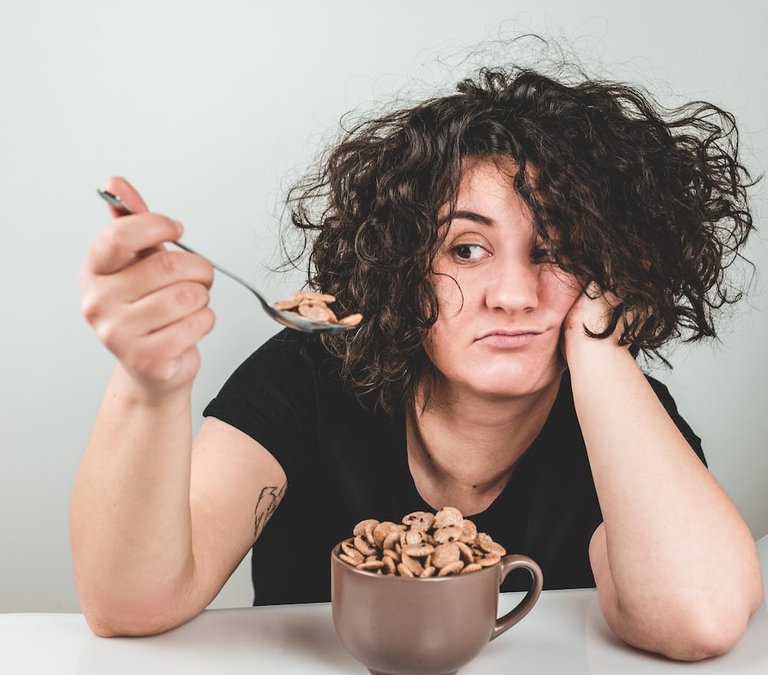Eating disorders are a complex condition with many factors contributing to its development. However, all eating disorders have one thing in common which is they are all preventable.The sooner you recognize the warning signs and seek help, the better your chance of recovery. To many people reading this now, you might be wondering what really is eating Disorder, stay calm because I also felt that same way hearing about it for the first time.
Out of curiosity, I made some few research to know more about it and I came up with some of the wonderful knowledge I have been able to acquire today in this post I have prepared for you.
An eating disorder is a serious condition which affects both men and women, and affects the way that people eat and think. There are many reasons people develop an eating disorder, and the most common are:
Racism - Many people with an eating disorder feel too fat to be part of certain groups, like certain ethnic groups. Because of this, eating disorders are very often racially-based.
Pressure - Some people with an eating disorder have anxiety or stress disorders which can make it hard to control their weight.
Family Issues - Parents may try to control their child’s eating in an attempt to fit in with society’s views on body image.
Fear of Weight Gain - There is a strong link between body image and self-worth, and people with eating disorders may be afraid of gaining weight because they feel un valued and dissatisfied with themselves even when they’re well fed.
Excessive Exercise - Exercise is a vital part of recovery from an eating disorder. But, people with an eating disorder often overcompensate for their lack of muscle through extreme exercise, to the detriment of their health.

The truth is there are many types of Eating Disorders, and the most common ones are the ones I have take my time to described below. However, an eating disorder may have more than one type. In some cases, an eating disorder may have multiple types.
- Severe deardigestive disorder (DDD)
This is the most severe form of an eating disorder and affects only a small percentage of people. The main symptoms of this type of eating disorder are: An inability or unwillingness to eat certain foods due to nausea, abdominal spasms, and extreme weight loss.
Obesity - This is the most common form of eating disorder, affecting about 40% of people, and it’s usually due to a combination of internal and external factors.
Cachexia - This is a rare, but serious, form of an eating disorder which usually affects the elderly.
Let's talk about the signs of eating disorder briefly before I moved to the next phase of this post. Some of the warning signs that someone you know may have an eating disorder ranges to:
Always hungry
Feeling full but sick,
Not wanting to eat because they’re “sick”
Feeling depressed when they’re not hungry
Not wanting to leave the house because they’re “sick”, and feeling that they have no control over their body.
Remember that physical indicators, like being hungry, are not always a sign of an eating disorder. Anorexia and bulimia are mental illnesses which involve different symptoms which may not always be present during eating.
While many people with an eating disorder will have a range of symptoms, the most common ones are listed below. The types of symptoms which a person might have for each of these disorders would depend on the cause of their eating disorder. For example, people with anorexia nervosa might have an intense fear of being fat, while people with bulimia nervosa might feel ashamed when they’re not underweight.
Mental Health Issues: People with an eating disorder may also have major depression or other mental health issues which are related to the disorder.
Emotional Eating: An eating disorder often causes people to lose interest in normal social activities like friends’ parties. They may also stop talking to people they like because they’re avoiding social interactions.
Physical Health: Everyone’s body is different, and while everyone may feel hungry sometimes, some people may not be able to eat because they’re fat.

Additionally, some people with an eating disorder may be underweight even though they’re not actually underweight relative to their size. This is because an eating disorder may cause a person to lose weight because they feel like they have no other choice, rather than because they actually are underweight.
As I mentioned above, each type of eating disorder has a different set of symptoms which may differ in some respects from person to person. To spot a person in front of you who may have an eating disorder, you’ll need to know which type they have. Here are a couple of things to keep in mind:
DDD type 1: Anorexia - Anorexia is a type of extreme dieting which causes people to think about and feel their food the entire time.
DDD type 2: Cold-blooded Eating - This is when someone will eat anything even if they’re not hungry, even if they don’t feel good about it.
DDD type 3: Emotional Eating - This is when people eat because they’re emotionally invested in the act of eating, rather than due to physical hunger.
Eating disorders are a serious condition which can affect both people of normal weight and those who are very overweight. By learning about the different types of eating disorders and how to spot them in others, you will be able to identify symptoms earlier so that you can take action sooner rather than later. If you or someone you know suffers from an eating disorder, please do not wait any longer to get help. You’ll be glad you did!
Congratulations @grace-p! You have completed the following achievement on the Hive blockchain And have been rewarded with New badge(s)
Your next target is to reach 300 replies.
You can view your badges on your board and compare yourself to others in the Ranking
If you no longer want to receive notifications, reply to this comment with the word
STOPCheck out our last posts:
Support the HiveBuzz project. Vote for our proposal!
💃💃💃